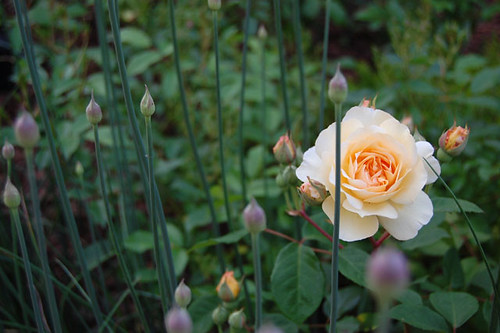Apricot rose and budding alliums by katewrightson
1. Be sure your vegetable garden is in a sunny location away from an area where there might be underlying roots of trees. And it is good to have a watering source nearby.
2. Be sure you have had your soil tested in the last 3 years and you have amended your soil with your extensions recommendations for the plants you want to grow. If you had it amended a few years ago, you can easily get a pH strip to see if the pH is still optimum.
3. Till in the ground cover that was on the soil where you want your plants to grow and work in good compost into the soil.
4. If it’s been more than a couple of weeks since you’ve turned the soil and prepared your beds, then they’ve probably crusted over from rain. Drag a rake over the area a couple of times to break up the crust (you’ll likely need to weed, too). (see here)
5. Make a diagram of your garden with the names of the plants you will grow. It doesn’t have to be fancy. But it will make you decide what you want and how much you need to buy and decide which plants are happy growing together. (see here)












![Sansevieria - Mother-in-law tongue or Snake Plant [Photo by Green Acres Nursery and Supply]](http://farm4.static.flickr.com/3282/2629831760_9308c4313e.jpg?v=0) TheGardenLady received this question from Donna:
TheGardenLady received this question from Donna: